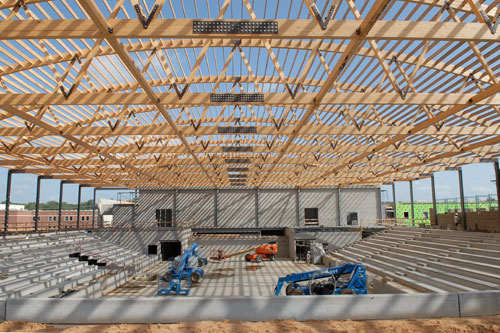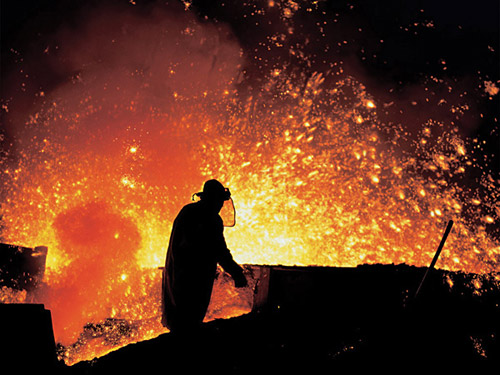Wood Rates: How Wood Products Stack Up in Green Building Systems
Wood is Good
Wood is an abundant, affordable and renewable natural resource, and when sourced from well-managed forests, it can be environmentally benign, as well. Strength for strength, wood uses less energy to produce than concrete or steel. Wood's inherent environmental merits include its material efficiency related to its combined thermal mass, as well as its water resistance, structural integrity and finish quality. Clean wood waste is easily recyclable. Add to these attributes the fact that wood can offer habitat restoration and eco-system well-being, support for local economies and contribution to carbon neutral/positive building.
 |
Switching from the initial steel and masonry design to wood construction reduced the cost by $2.7 million (US). El Dorado High School, El Dorado, AR. Architect: CADM Architecture, Inc. Photo: WI Bell, courtesy WoodWorks |
Timber, in fact, is known for its ability to store carbon, giving it an environmental advantage over other construction materials with their energy-intensive production processes. Producing building materials such as steel, cement and glass require temperatures of up to 3,500 °F. In contrast, forests with healthy ecosystems are virtual carbon sinks by removing carbon dioxide (CO2) from the atmosphere. In the process of photosynthesis, all parts of the tree - trunk, branches, leaves, and root systems - store carbon in the form of sugars, releasing oxygen back into the atmosphere. While trees that die and decompose in the forest release carbon as CO2 back into the atmosphere, no more carbon is emitted in the production and whole life cycle of a wood product than is absorbed from the atmosphere when the tree is growing. Timber that ends up as wood products for use in buildings actually stores carbon over the life of the building. At the end of its structural use, it can be deconstructed, salvaged (for more information see www.dontwastewood.com) or used as an energy source, substituting for fossil fuels.
 |
The manufacture of many building materials is energy intensive. Photo: Used with permission from Trinec Iron and Steel Works (Trinecké zelezérny) |









